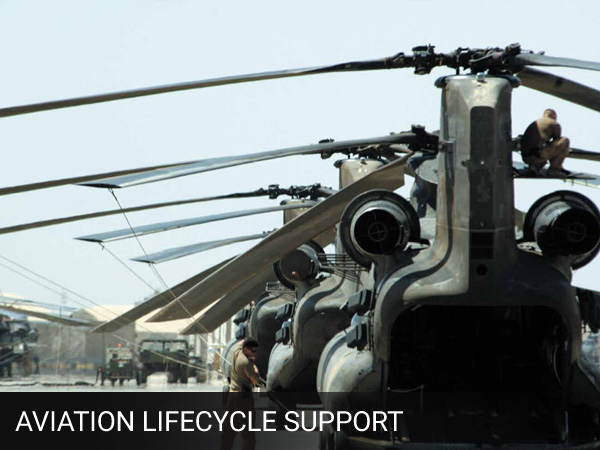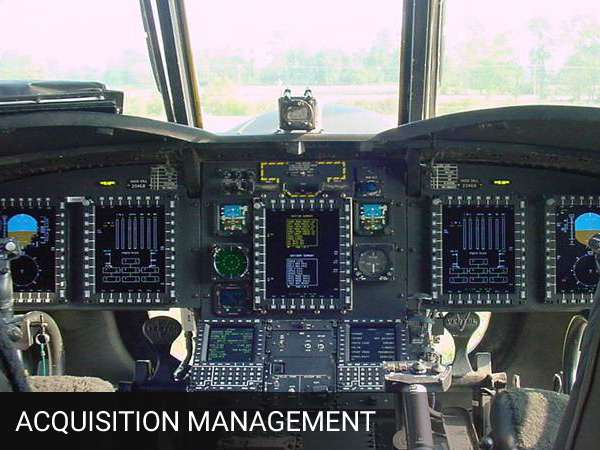Cruz holds both a SeaPort-e prime contract in all seven zones and a SeaPort Next Generation contract. SeaPort is used to respond to task orders in support of the Naval Sea Systems Command, Naval Air Systems Command, Space and Naval Warfare Systems Command, Naval Supply Systems Command, Military Sealift Command, Naval Facilities Command, Strategic Systems Programs, Office of Naval Research and the United States Marine Corps.
Zones Covered

Current SeaPort Task Orders
N00174-17-F-3009 – Explosives and Ordnance Operations Support for IHD NSWC, Indian Head, MD and IHD NSWC Detachement Yorktown, VA
Current SeaPort Teammates
-
Teammates
- Envisioneering
- Alion-IPS Corporation
- Science Applications International Corp (SAIC)
- Eastern Research Group, Inc.
- Enterprise Engineering, Inc.
- Applied Technical Systems, Inc.
- Kokua Support Services
- Special Applications Group, LLC
- Advanced Vision Systems Inc.
- WinTec Arrowmaker Incorporated
- Subcontractors
- Advanced Vision Systems Inc.
- C & G Mechanical, LLC
- Chameleon Integrated Services
- Dynamic Federal Solutions, Inc.
- Eastern Research Group, Inc.
- Enterprise Engineering, Inc.
- Envisioneering
- Logzone, Inc.
- Special Applications Group, LLC
- Universal Solutions International, Incorporated dba USI
SeaPort Functional Areas
3.1 Research and Development Support
This functional area consists of supporting the development and application of scientific and analytical disciplines to conduct fundamental research; scientific study and experimentation directed toward advancing the state-of-the-art or increasing knowledge or understanding; concept formulation; assessment of system and subsystem requirements; development, analysis and evaluation of concepts, technologies, systems and subsystems; and development of operational concepts and tactics with the end goal being the application of results to developing new or improving existing warfighting capabilities.
3.2 Engineering, System Engineering and Process Engineering Support
This functional area consists of supporting the application of engineering disciplines to technically support development of new warfighting capabilities and systems, technically support development of significant alterations to existing systems, support integration of existing equipment or software into different applications or platforms to support the warfighter, and support evaluation of foreign or non-developmental weapons systems, equipments, and technologies to satisfy existing warfighting requirements. Support is required for system and process engineering disciplines that systematically consider the requirements, synthesize and evaluate alternative concepts, identify a recommended selection, and generate a design and system specification.
3.3 Modeling, Simulation, Stimulation and Analysis Support
This functional area consists of the application of a standardized, rigorous, structured methodology to create and validate a physical, mathematical, or otherwise logical representation of a system, entity, phenomenon, or process. The functional area involves the use of models, including emulators, prototypes, simulators, and stimulators, either statically or over time, to develop data as a basis for making managerial, technical, strategic, or tactical decisions.
3.4 Prototyping, Pre-Production, Model-Making and Fabrication Support
This functional area consists of the building, fabrication, testing, evaluating and operating reduced and full scale models, mock-ups, prototypes, pre-production units and research and development (R&D) test tools of electronic and electro-mechanical systems and system elements. Fabrication and machining of replacement parts or equipment for fielded systems or platforms is included. Includes the use of traditional materials as well as new composite materials.
3.5 System Design Documentation and Technical Data Support
This functional area involves the engineering effort required to prepare and assure that the detailed technical data documentation that is necessary to support system development reflects the latest design, configuration, integration, and installation concepts. Technical documentation may be in the form of paper, electronic (digital), or interactive computer systems.
3.6 Software Engineering, Development, Programming and Network Support
This functional area consists of applying the engineering and scientific disciplines to perform technical analysis of, technically support development of or selection of hardware and computer software, or modification to existing hardware and software for systems, test facilities, or training facilities. This also consists of software engineering efforts and programming support required to technically support software implementation in systems, sub-systems, and components utilizing computers, electronics, and software. Planning, designing, coding, testing, integrating, supporting, and delivering algorithms, software (source code and executables), computer programs are the inherent activities of this functional area. Generally, the software development processes used for software development under this contract shall be, as a minimum, assessed at Software Engineering Institute (SEI) Capability Maturity Model (CMM) Level 3 or equivalent, however the Government may specify other (either lower or higher) standards in individual task orders issued under the contract.
3.7 Reliability, Maintainability and Availability (RM&A) Support
This functional area consists of applying engineering, scientific, and analytical disciplines to ensure that systems and platforms RM&A requirements are integrated with the system design, development and life cycle sustainment resulting in warfighting capabilities that function effectively when required and that detection and correction of design deficiencies, weak parts, and workmanship defects that affect functionality are implemented.
3.8 Human Factors, Performance and Usability Engineering Support
This functional area consists of applying engineering, scientific, and analytical disciplines to ensure that design of interactive systems are safer, more secure and easier to use thereby reducing accidents due to human error, increasing system integrity and enabling more efficient process operations. This functional area also includes applying engineering, scientific, and analytical disciplines to ensure that the number, type, mix, knowledge, skills, and abilities (KSAs), aptitudes and physical characteristics of operators, maintainers and support personnel have been defined and documented early in the system design phase.
3.9 System Safety Engineering Support
This functional area consists of applying engineering and analytical disciplines to ensure that safety is considered in all aspects of design, development, operation, maintenance, and modification of systems and platforms.
3.10 Configuration Management (CM) Support
This functional area consists of applying engineering and analytical disciplines to identify, document, and verify the functional, performance, and physical characteristics of systems, to control changes and non-conformance, and to track actual configurations of systems and platforms.
3.11 Quality Assurance (QA) Support
This functional area consists of applying engineering and analytical disciplines to ensure that the processes and products used in the design, development, fabrication, and manufacture of items results in quality products.
3.12 Information System (IS) Development, Information Assurance (IA) and Information Technology (IT) Support
This functional area consists of providing information system software analysis, requirements definition, design, development, test, modification, installation, implementation, quality assurance, training, and documentation to meet the evolving data storage and reporting needs of programs and management. Analyze existing IT and IS databases, web sites, and IT applications and recommend new or improved interfaces and improved management tools that meet new management requirements or improve management effectiveness and efficiency. Perform maintenance and technical support for Local Area Networks (LAN) and Wide Area Networks (WAN) that are outside the cognizance of the Navy Marine Corps Intranet (NMCI). Modify, implement, and maintain web based information systems and links. Develop web-site structure, prepare documentation for population, and implement and maintain web sites. Provide systems engineering and technical support for establishment, test, upgrade, and operational support of systems, networks, workstations, and support equipment hardware and software that are outside the cognizance of NMCI. Conduct IA analyses, develop, recommend and implement, monitor, update, and maintain, IA practices, procedures, equipments, algorithms, and hardware that are outside the cognizance of NMCI.
3.13 Ship Inactivation and Disposal Support
This functional area consists of technically supporting submarine, aircraft, weapons system and ship inactivation and disposal efforts to ensure that critical equipment removed is safeguarded and destroyed in accordance with the appropriate Navy instructions and directives. Provide direct liaison with the Shipyard or depot and the Navy to insure that critical technology is not inadvertently transferred to foreign nationals or governments. Ensure proper documentation exists for the sale of excess materials from inactivated platforms prior to sale by the Defense Reutilization and Marketing Service (DRMS). Technically support the demilitarization process for shipboard equipment using the Expanded Work Breakdown Structure (EWBS), Trade Security Controls (TSC), and Munitions List Items (MLI) all of which are used to determine the disposition of excess, not-ready-for-issue (non-RFI) equipment. Technically support the security classification requirements and guidelines for data and equipment necessary to assist in making decisions on sales issues.
3.14 Interoperability, Test and Evaluation, Trials Support
This functional area consists of the application of engineering, scientific, and analytical disciplines necessary to ensure that developed platforms, systems, and warfighting capabilities have been properly tested and that joint interoperability requirements have been fully met at all levels of their life cycle.
3.15 Measurement Facilities, Range, and Instrumentation Support
This functional area consists of applying engineering, analytical, and technician disciplines in the operation and support of measurement facilities, ranges and instrumentation used for testing, evaluating, experimenting, and exercising platforms and systems.
3.16 Acquisition Logistics Support
This functional area consists of applying the engineering and analytical disciplines required to implement acquisition logistics as a multi-functional technical management discipline associated with the design, development, test, production, fielding, sustainment, and improvement modifications of cost effective systems that achieve the warfighter’s peacetime and wartime readiness requirements. The principal objectives of acquisition logistics are to ensure that support considerations are an integral part of the system’s design requirements, that the system can be cost effectively supported through its life-cycle, and that the infrastructure elements necessary to the initial fielding and operational support of the system are identified and developed and acquired.
3.17 Supply and Provisioning Support
This functional area consists of applying the analytical and technical disciplines required to ensure that fielded warfighting capabilities are materially sustained. The principal objectives of this functional area is to ensure that material for fleet operation and maintenance of systems is available when required, that materials are properly stored and transported, and inventories are managed in a cost effective manner to sustain supported systems.
3.18 Training Support
This functional area consists of applying the engineering and analytical disciplines required to ensure that the warfighter and technical support community is provided with adequate instruction including applied exercises resulting in the attainment and retention of knowledge, skills, and attitudes regarding the platforms, systems, and warfighting capabilities they operate and maintain. This functional area includes organizational development activities.
3.19 In-Service Engineering, Fleet Introduction, Installation and Checkout Support
This functional area consists of the application of engineering, analytical, and technical disciplines and skills to establish and maintain long-term engineering, operation, and maintenance support for in-service war fighting capabilities as well as the capability to modernize or introduce transformational technologies into those capabilities.
3.20 Program Support
This functional area consists of applying the business, financial management, and technical disciplines required to support planning, organizing, staffing, controlling, and leading team efforts in managing acquisition programs such that the result places a capable and supportable system in the hands of the warfighter when and where it is needed, and does so at an affordable price. This functional area represents an integration of a complex system of differing but related functional disciplines that must work together to achieve program goals through development, production, deployment, operations, support, and disposal.
3.21 Administrative Support
This functional area consists of applying the clerical and administrative disciplines required for seamless operation of offices and support functions.
3.22 Public Affairs and Multimedia Support
This functional area consists of supporting the development and application of print, photo, video and multimedia public affairs instruments. Support may be required for promotional writing services, message/brand development, visual media to include still, video and multimedia documentation, message dissemination, photography, and other public affairs services to augment existing staff and provide critical assistance in development of communication messages for the Navy.
Seaport – Quality Assurance Surveillance Plan (QASP)
CAI’s Quality Assurance Surveillance Plan (QASP) is founded on ISO 9001:2000 quality principles. We are committed to the implementation and use of these principles to support standardization, management responsibility, customer satisfaction, corrective and preventive measures, performance measurement, and continuous process improvement.
Our rigorous QASP defines our methodology of internal quality control practices and inspections. Every aspect of our performance is mission-driven and focused on supporting the needs of our Government customers. Our commitment to quality is strongly endorsed by management at all levels, thoroughly communicated to our workforce, and constantly reinforced through training.
Our QASP will provide a concisely planned and controlled approach that focuses on customer support and satisfaction, while maintaining effective lines of communication with all Government stakeholders.








